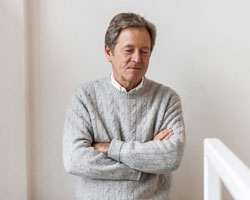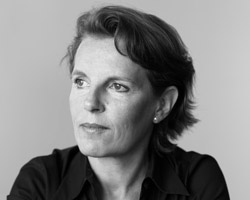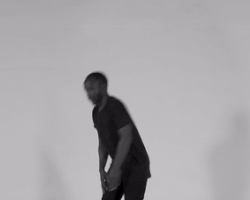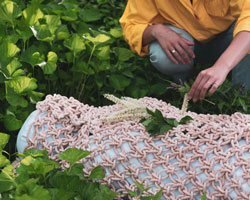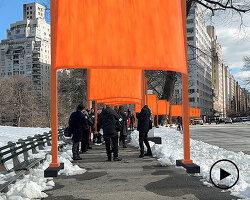new york-based artists tin nguyen & edward cutting – aka tin&ed – have created a virtual dance party on the occasion of world pride. ‘we come in peace’ is a digital installation that aims to celebrate unity while exploring the relationship between humans, nature and technology, a common thread that unites tin&ed’s futuristic portfolio.
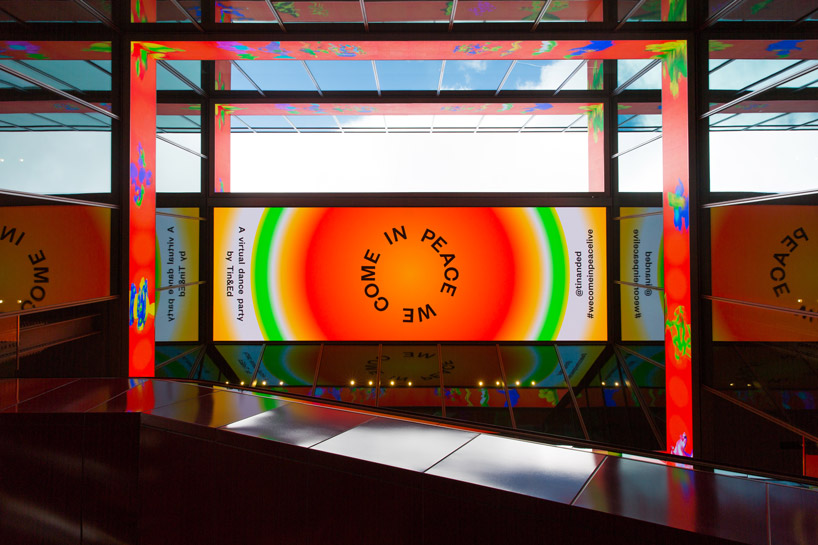
all images courtesy of the designer
‘our work explores the ways in which we are all connected, to nature, our urban environment, and most importantly to each other,’ tin&ed explain. ‘we are interested in how technology can open up new ways of perceiving and understanding the world around us, as well as aid in collaborative art making. we take these explorations and ideas to create playful projects and experiences that bring people together.’
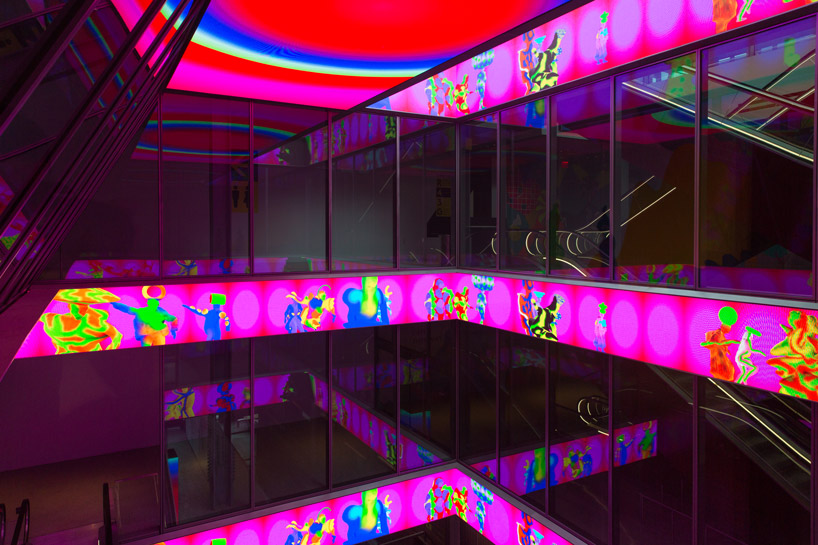
based in chinatown in new york, tin&ed work fluidly between the physical and digital worlds creating images, objects, and installations for cultural, institutional and commercial clients. their portfolio includes adidas, nike, samsung, IKEA and visa.
for this particular installation, tin&ed created a series of avatars based on artists, designers, and other creative individuals they met around the world. this guerilla process of creations involved taking 3d scans of each individual that were then digitally re-sculpted to create new organisms.
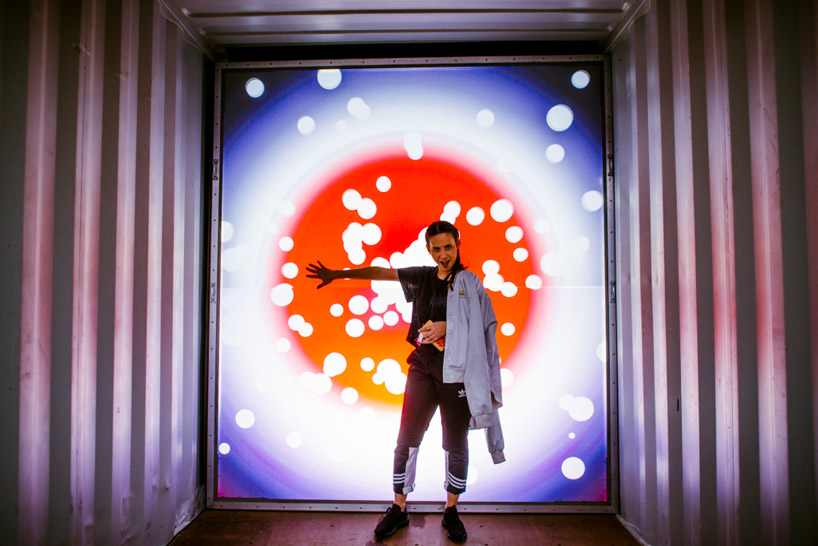
an 2016 installation tin&ed designed for adidas future nights music festival event
‘we come in peace’ was first launched as a single channel projection at design indaba earlier this year. during the annual conference, which brings together both internationally-acclaimed designers and emerging talents from across the world to present their work, tin&ed went about 3D scanning the people they met. architect dong ping wong, cyborg artist neil harbisson, and design indaba founder ravi naidoo, were all translated into alien-like avatars.
‘we come in peace’, tin&ed (2019)
‘our aliens are digitally evolved forms of ourselves, merged with aquatic, territorial and aerial lifeforms found on earth. for us aliens represent the outsider, something that is unknown or different to us,’ the designers explain.
‘our work has always been about encouraging people to embrace the unknown, to celebrate our differences, whether we’re from a different country, culture, species or planet.’
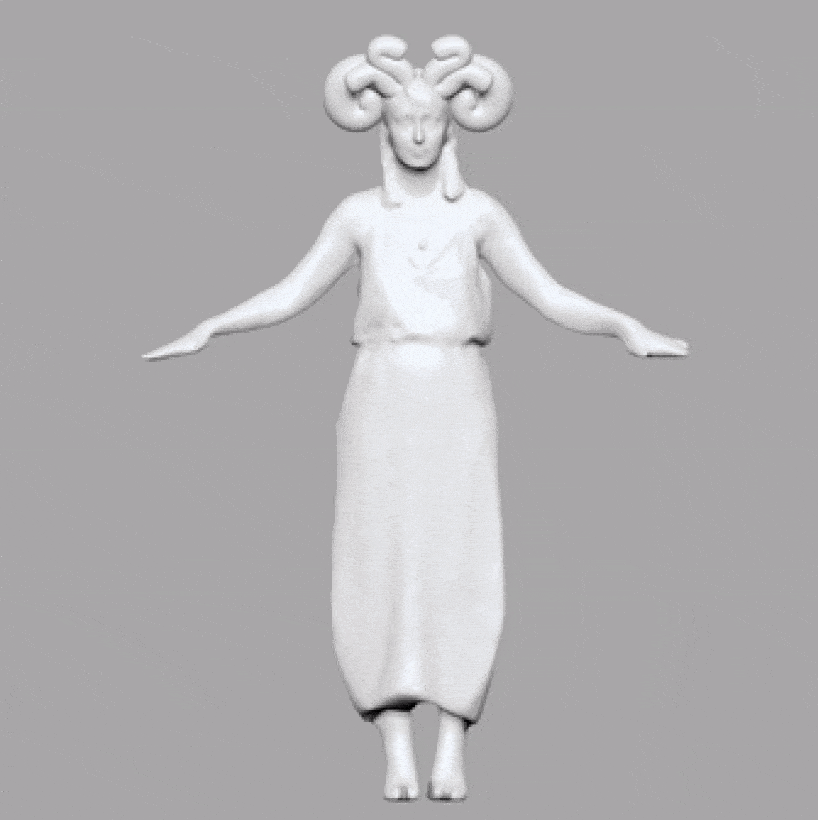
the artists took 3D scans of each individual before turning them into unique avatars
tin&ed looked at nature to inform each ‘new organism’, borrowing color palettes from sea creatures, reptiles and wild funghi. they also studied biodiversity to add new sculpted elements to each alien-like figure.
the avatars were then rigged and taught to dance before being brought together to live in a digital space using a game engine. very simply, a game engine is software used to build video games, creating it is a realtime environment which allows for interactivity. the game engine provides the realtime environment in which the various avatars can come to life.
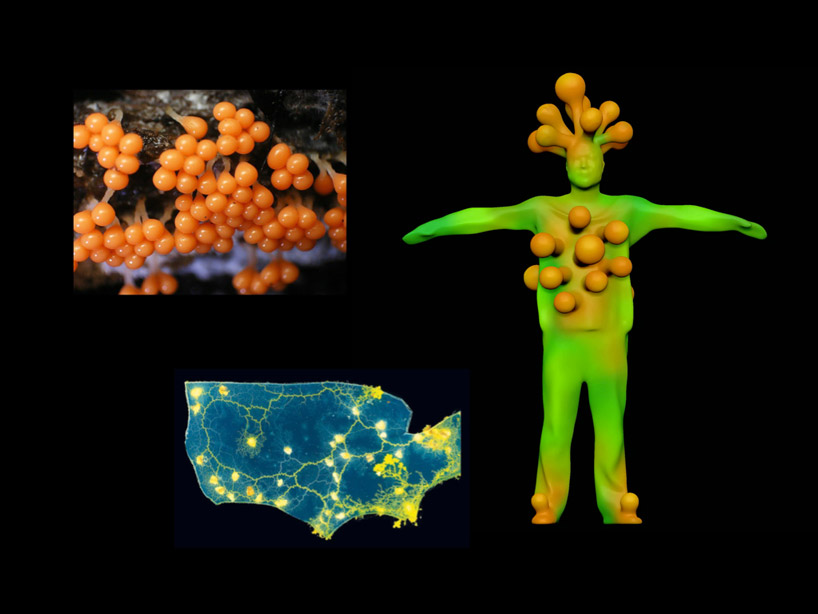
they studied biodiversity to add new sculpted elements and create alien-like figures
‘we come in peace’ is currently being shown across 16 screens in the atrium of pier17, a 300,000-square-foot mall and public space in the seaport district of manhattan. the artwork screens for 10 minutes every hour on the hour every day and 30 minutes from 7pm on monday.
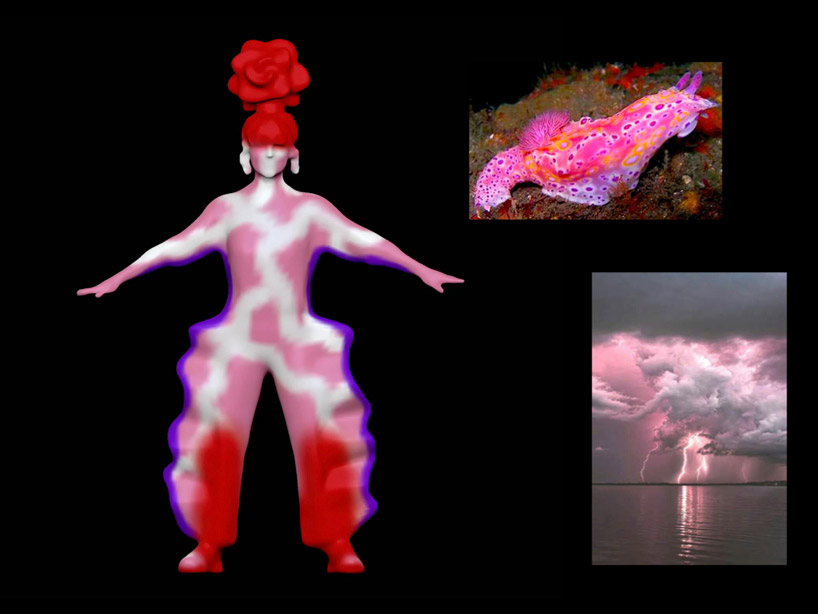
the artists borrowed color palettes from sea creatures, reptiles and wild funghi
‘the project proposes a world where humans, nature and technology are more in balance,’ tin&ed add. ‘technology can connect people by bringing people together in celebration in both virtual space and in real life. this project aims to do both by brining together people from around the world in virtual space and the people of new york in actual space.’
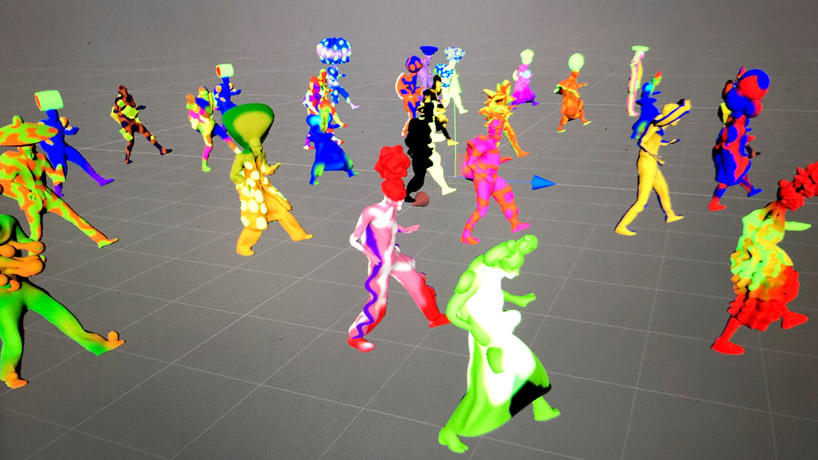
the avatars were rigged and taught to dance before being brought together to live in a digital space using a game engine
‘we come in peace’ is an ongoing project that is part of a series of site specific works that tin&ed have created for events around the world. as it develops tin&ed plan to use artificial intelligence to enable the use of live data streams and open up new opportunities for interactivity.
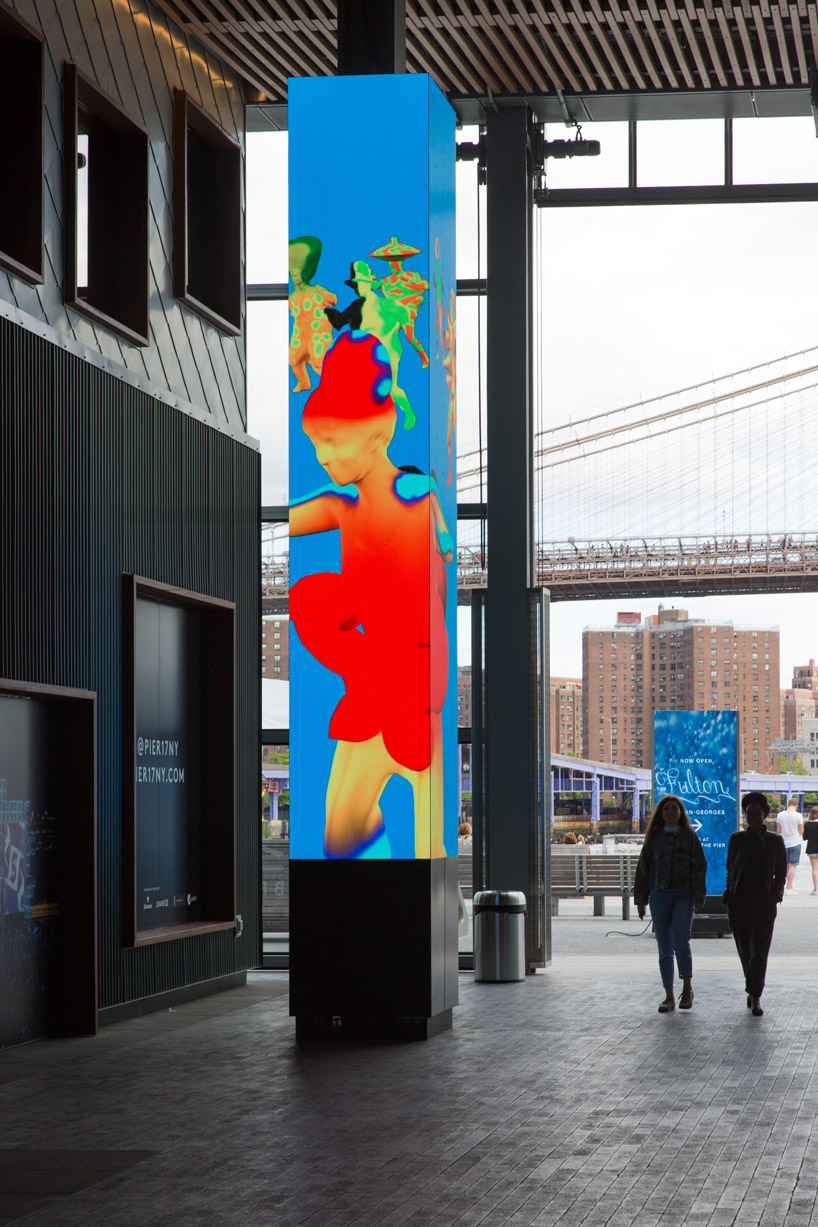
‘we come in peace’ is an ongoing project that is part of a series of site specific works
‘the next stage is to apply artificial intelligence to the avatars, this will allow them to react to things in the physical world like live audio or visual input. for example, just like us the avatars would dance differently depending on what a live band or DJ was playing.’
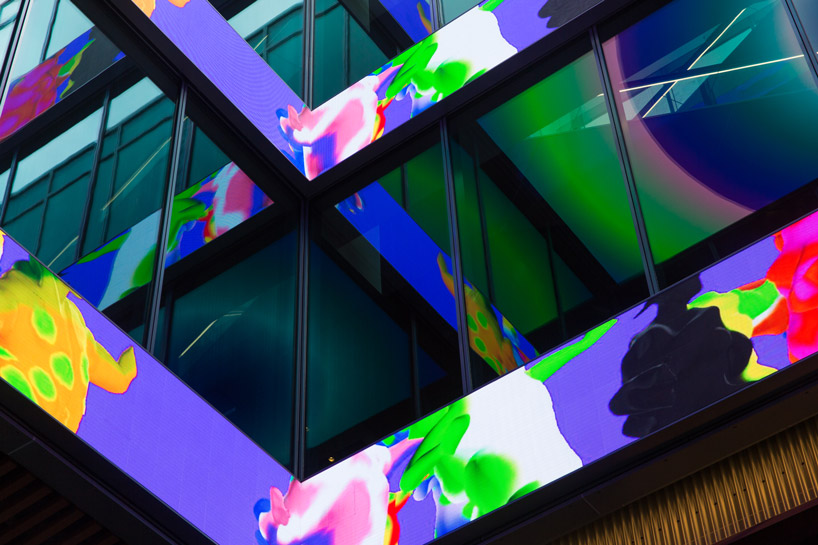
‘we come in peace’ is currently being shown across 16 screens in the atrium of pier17
‘we’re also interested in how this technology could open up new ways of seeing and understanding the world around us. by using live data from our environment, for example using wind or tidal data to affect the behaviour of the avatars we could create a new way of perceiving the natural world.’
project info
designer: tin&ed
title: we come in piece
location: pier17, atrium
